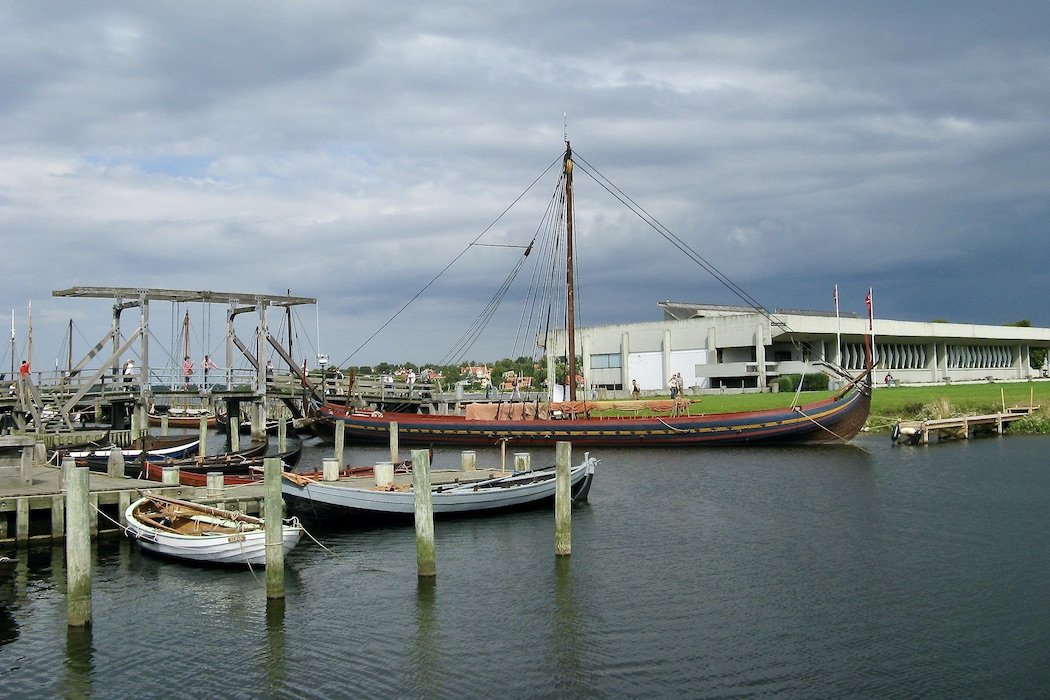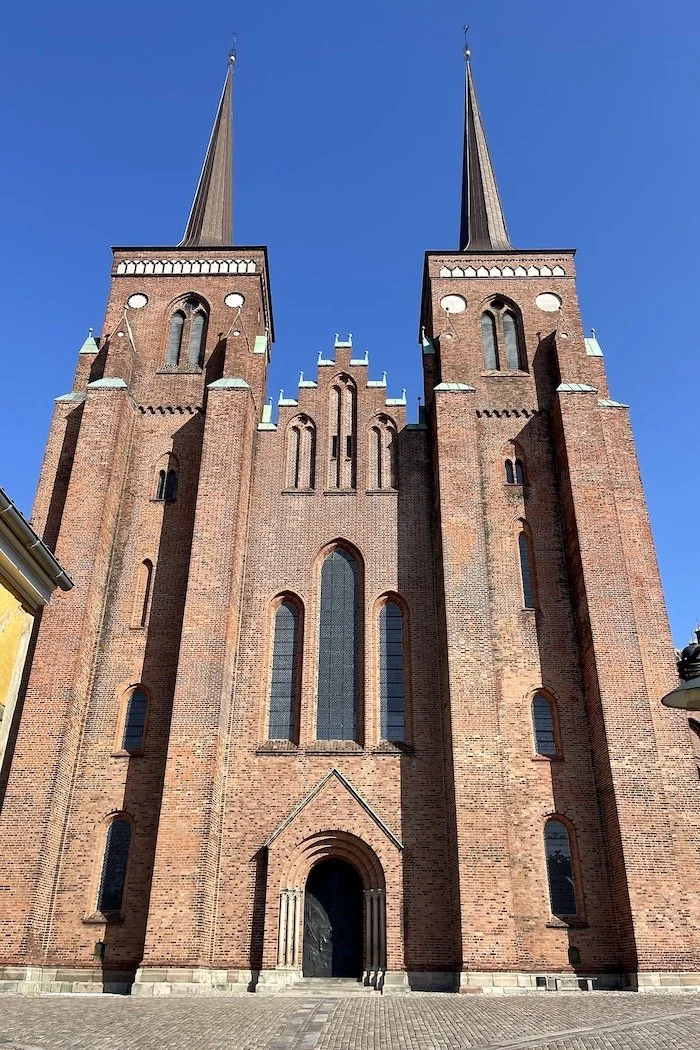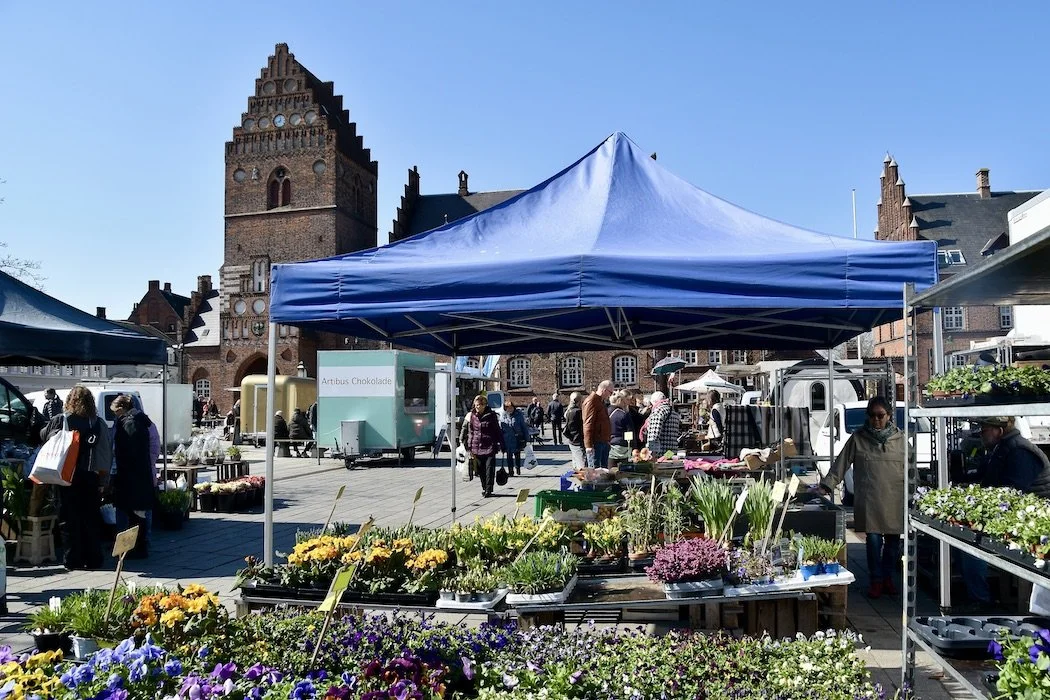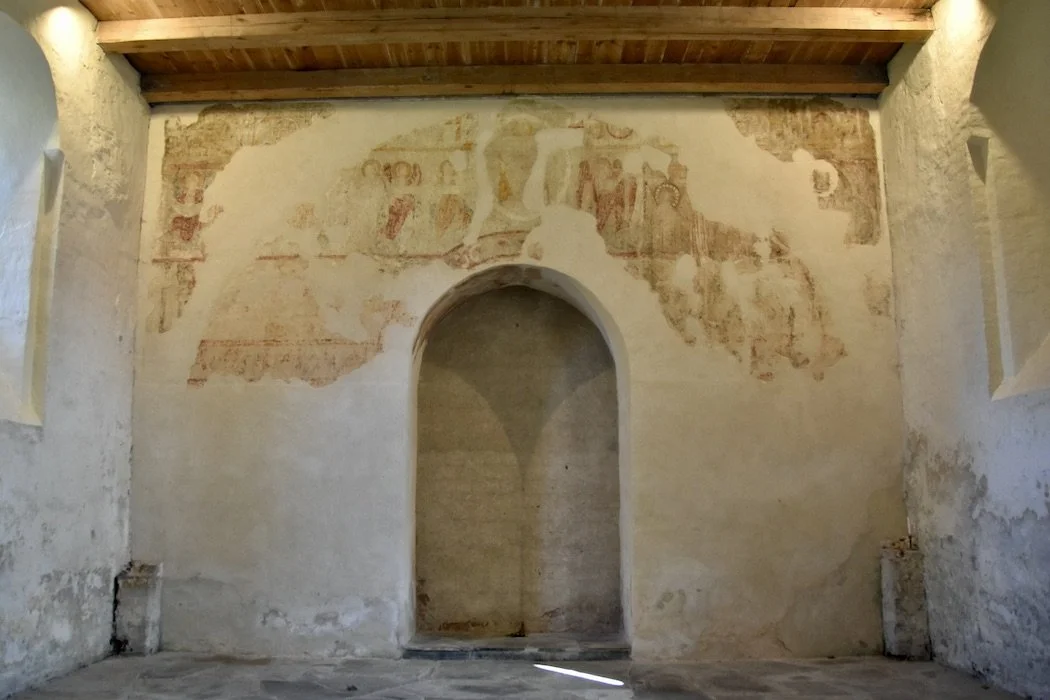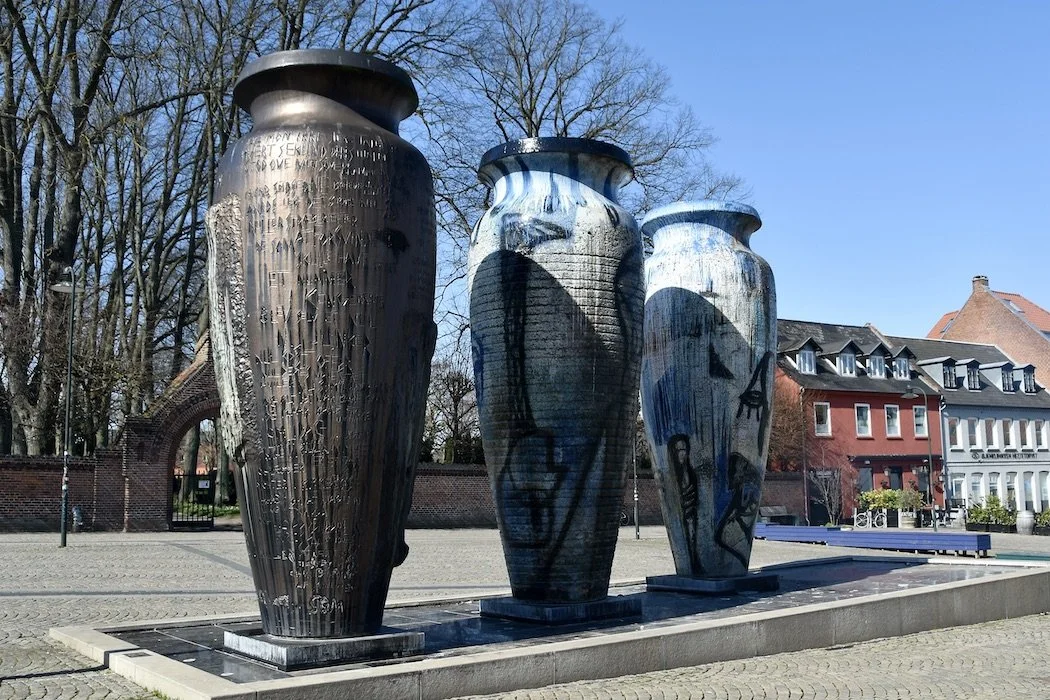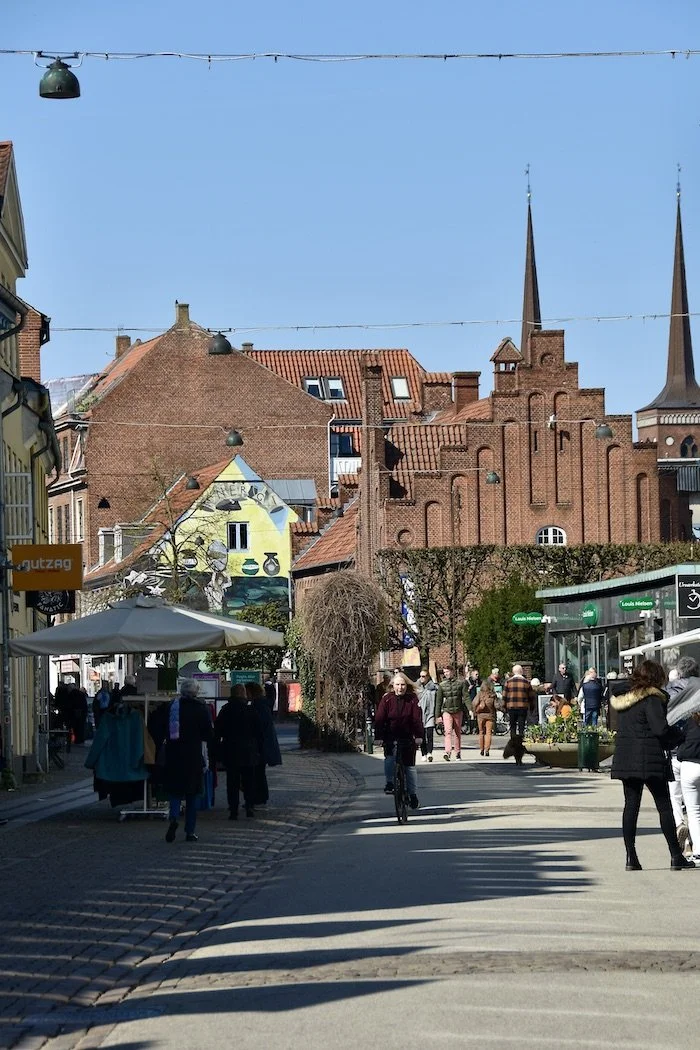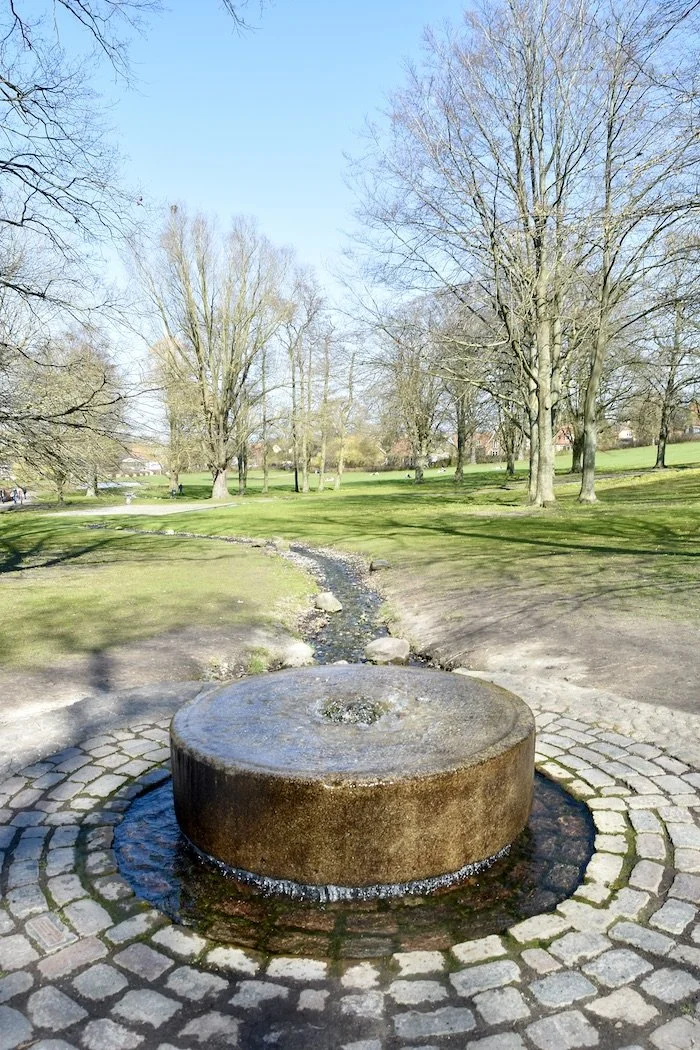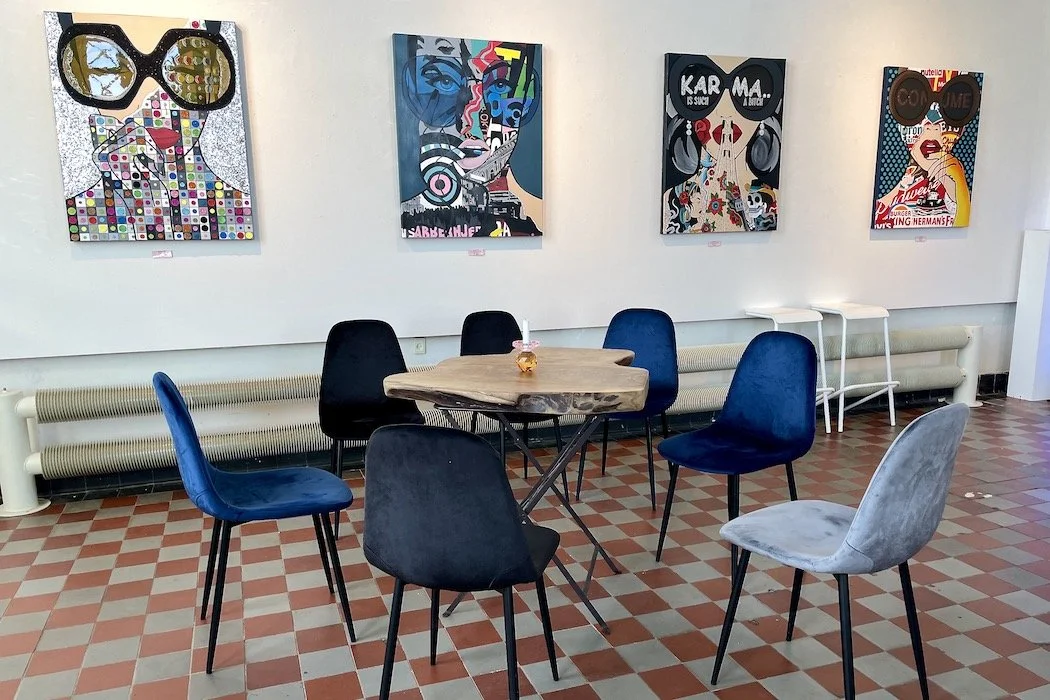Meet ancient Denmark in Roskilde
Roskilde Viking Ship Museum and longship`Sea Stallion of Glendalough´
An invisible thread connects those destined to meet…” – Ancient Chinese Proverb
Visiting Roskilde is like taking a journey through Danish history. Located at the southern tip of the Roskilde branch of the long Isefjord, the town developed as the hub of Viking land and sea trade routes over 1000 years ago in the pre-Christian era. According to medieval theologians and chroniclers Adam of Bremen and Saxo Grammaticus, Harald Bluetooth, who Christianized the Danes, founded a settlement on high ground above the existing harbor in the 980s. Saxo and other early authoritative sources associate the name, meaning Ro’s spring, with the legendary King Roar (Hrothgar) who possibly lived there 300 years before Harald.
The grassy slope from the fjord up to town, once grazing ground and now a sprawling park is the source of several springs that were believed to have healing powers, including St. John’s spring near the Gothic Cathedral. After King Canute elevated Roskilde to a bishopric, Bishop Absalon had a brick church built in 1170 on the site of Harald’s wooden church. Five succeeding bishops added on, and today’s massive structure was completed in 1275 as the first brick Gothic cathedral in Scandinavia, a style that spread throughout northern Europe. Roskilde Cathedral remains the burial site of Danish monarchs to this day, where 39 splendid royal tombs rest under immense vaulted ceilings and in an adjacent outdoor burial site.
Through Absalon’s influence, other churches and five monasteries were built before the Reformation, including Romanesque St. Ib’s Church with its rich frescos, and St. Jørgensberg Church, Denmark’s oldest intact stone building. Roskilde became the largest and most important town in Zealand, enjoying early market privileges and wide influence because the bishop also owned large swathes of land to the Baltic Sea, including a fishing village called Havn (harbor) 35km (22 mi.) to the east, which eventually became Copenhagen. From the 11th century until 1443, Roskilde was Denmark’s capital.
Today, Roskilde’s former importance is revealed in the original town plan with two main pedestrian shopping streets leading to Stændertorvet, the generous market square by the Cathedral, that still hosts the market every Wednesday and Saturday. Adjoining the square, Roskilde Palace, formerly the bishops’ residence, is a Museum of Contemporary Art. Nearby, Roskilde Convent has also transformed into a museum, this one of Renaissance paintings and furniture, and the Local History Museum is housed in a half-timbered former sugar refinery.
At the harbor, the Viking Ship Museum contains well-preserved remains of five 11th-century Viking ships of several distinct types that were excavated from the fjord bottom in the late 1960s. The ships were scuttled in the 11th century to block a navigation channel and protect the capital from attack. An extensive boatyard preserves Viking boat-building methods by hand-building and displaying full-scale ships, including the longship `Sea Stallion of Glendalough´ that a crew sailed to Dublin in 2007 and back the following year.
local Contemporary culture also has a stage in Roskilde. Native son, L. A. Ring pioneered symbolism and social realism in Danish painting from his atelier by the harbor, and his work “Summer Day by Roskilde Fjord” counts as a masterpiece of Danish culture. Nearby, the old power station is a delightful glasswork and café. The world-renowned Roskilde Festival, one of Europe’s largest rock music events, has taken place annually since 1971 at fairgrounds on the outskirts of town.
Don’t Miss:
Seeing the inside of the awe-inspiring, massive Cathedral that holds Denmark’s history within its walls.
Serendipity:
Finding the unexpected- Coming across St. Hans fountain, recessed in a stone wall, while looking for St. John’s fountain, thus finding two.
Lunch Tip:
Café Knarr at the Viking Ship Museum for new Nordic Viking food made with seasonal local produce that was available during the Viking Age.
Bedtime:
No local hotel needed, as Roskilde is an excellent day trip (30-minute train ride) from Copenhagen.
Subscribe for inspiration to have my posts drop directly into your inbox. *If you enjoyed what you read, please share this post with like-minded travelers.*
*All photographs are mine, taken with my Nikon D5600 or iPhone 12 Pro.*

